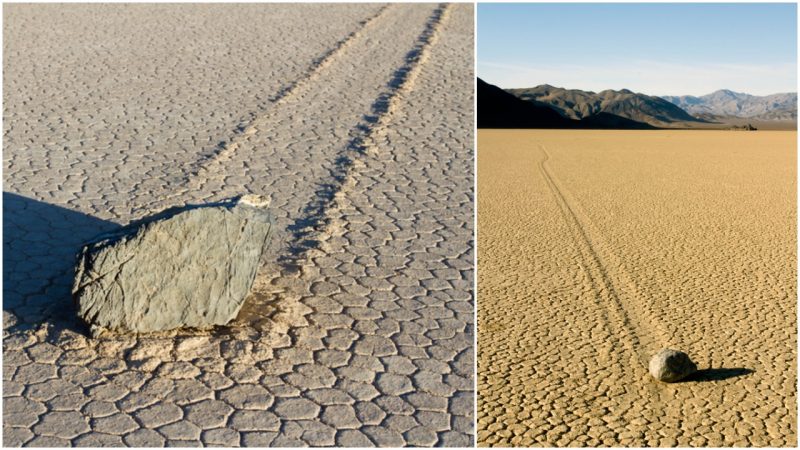Known for being one of the hottest places on Earth, Death Valley National Park wears a name that sounds terrifying, but there are many features within its boundaries that are praised for their scenic beauty, and others, like the Racetrack Playa, that are filled with mystery.
A flat, dried-up lake-bed in the desert landscape, the Racetrack Playa is a peculiar area that stretches some three miles. As the seasons change, so does its surface. During the summer months, the cracked mud could suggest that the terrain belongs to an alien, water-free planet; in winter months, it can be steeled with a sheet of ice. However, it is the dozens of rocks, some of which are small enough to hold in your palm, others as massive as 700 pounds, which raise questions.
These stones can apparently drift from point A to point B as if an invisible magician were sitting on a nearby mountain peak and playing telekinesis. Except that this isn’t the work of any magician. Part of the mystery of what moves the rocks is that nobody witnessed them doing so for a very long period.
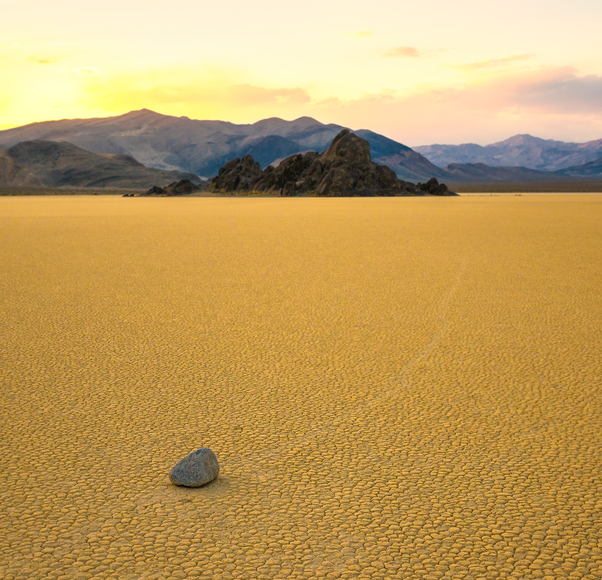
Yet it was obvious that some of the most massive pieces could traverse significant distances from their original position–one trail left by an enormous stone measures 1,500 feet. It has also been determined that a straight track is the result of a sliding rock that sports a rough bottom, while a rock which has a smooth base is prone to more erratic movements.
While all such details have been gathered by geologists and researchers over the years, what remained unanswered is precisely how the sailing stones slide and produce tracks. Everyone added their own tidbit of theory, some saying it is due to magnetism, others that it is gravitational forces. Conspiracy theories have not missed the chance to propose this must be the work of the aliens. All such postulations have been dismissed, and the area has been investigated since the early 20th century.
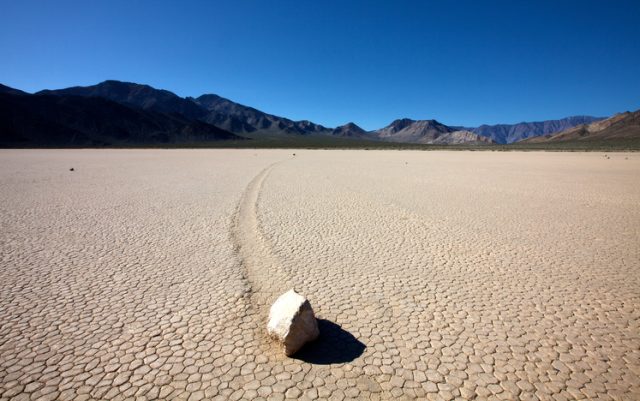
In more recent times, an experiment set up in one scientist’s kitchen proved sufficient to build the most compelling evidence of how the rocks move. Following the experiment, the first time-lapse photographs of the scene and more intense observations in the field were carried out.
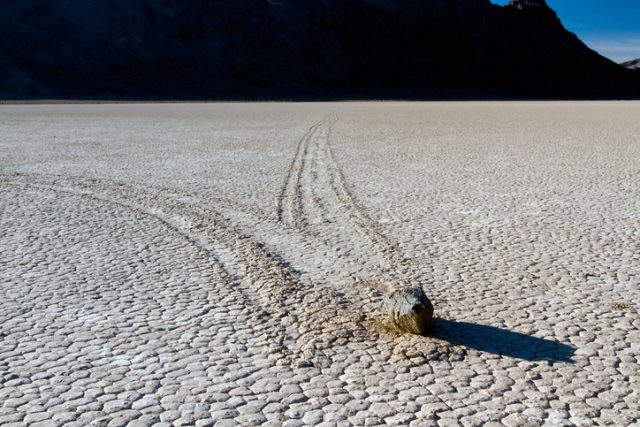
NASA Scientist Ralph Lorenz originally came to Death Valley in 2006 to investigate meteorological patterns in the area. His curiosity was piqued by the enigma of the Racetrack Playa and its famous sailing stones.
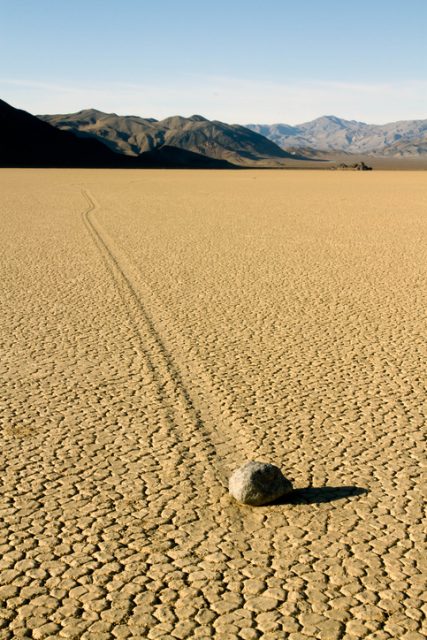
Lorenz pursued a little experiment in his kitchen back home, which he explained for Smithsonian magazine in June 2013. He put an inch of water in a container, added a piece of rock large enough to stick up above the water’s surface, and popped the whole thing in the freezer.
Next he took the rock, now embedded in ice, and placed it in a tray of water with sand on the bottom. All he needed to do was blow on the rock to set it in motion. The movement also produced a trace in the sand.
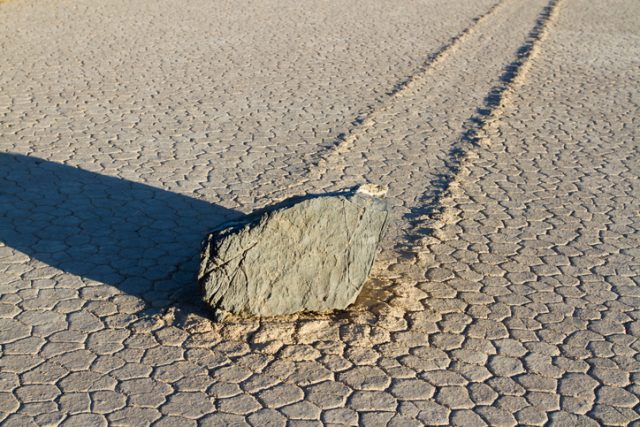
“Basically, a slab of ice forms around a rock, and the liquid level changes so that the rock gets floated out of the mud,” he clarified for the Smithsonian. “It’s a small floating ice sheet which happens to have a keel facing down that can dig a trail in the soft mud.”
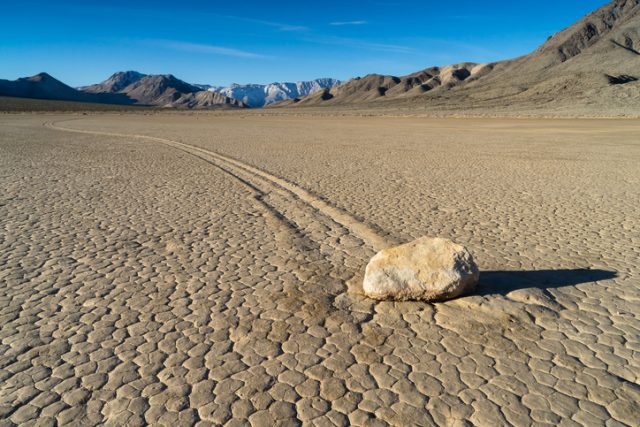
Lorenz investigated further after his initial experiment proved more promising as a solution to mystery than any other theory previously considered. He and his team presented the findings in a paper in 2011.
Indeed, it took some physics to get the stones in motion, or rather the perfect combination of water, ice, and a light breeze. As this process could sometimes take decades, scientists installed time-lapse cameras. They were able to capture, for the first time, how the Racetrack Playa changes.
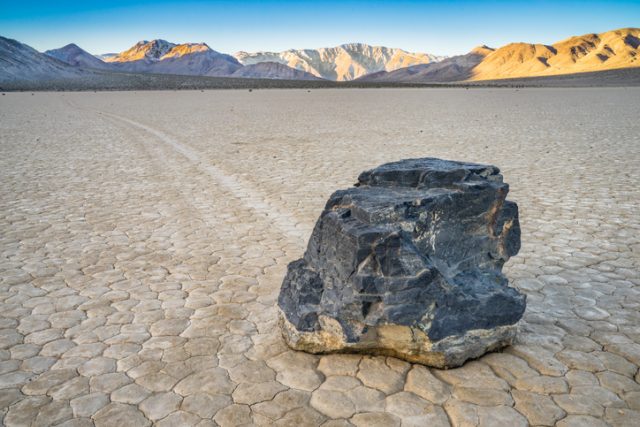
The research team calculated that in the right conditions during winter months, rainfall pooled on the surface of the playa would freeze during the night and then melt the following day. As the ice sheets gradually thin, pieces attached to the rocks can break off, allowing them to freely glide across the surface when pushed by the force of just a little wind. This is how the trails were produced. It just took the right amounts of ice, water, and wind, to debunk a mystery.
But Death Valley, nestled between the borders of California and Nevada, has more intriguing features ready to astound everyone who happens to pass the area. Now that the Racetrack Playa enigma has been solved, perhaps some of the park’s other features–its dunes, dicey canyons, and even a meteor crater–might just hold a new mystery for scientists.
